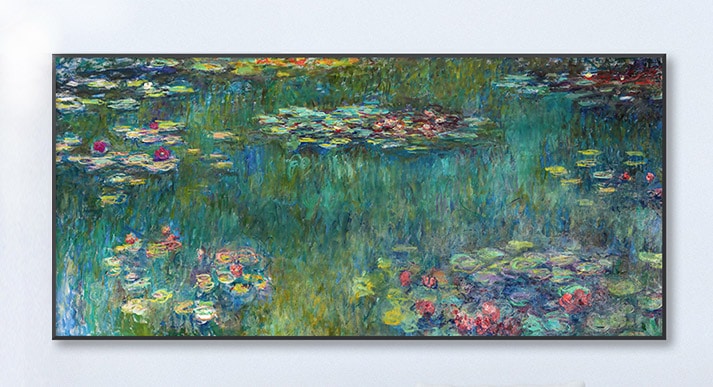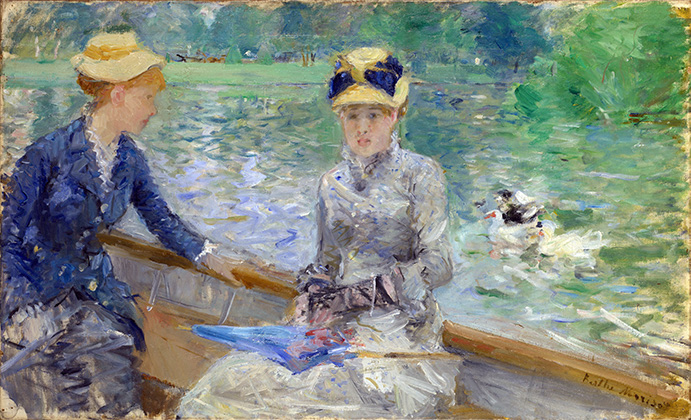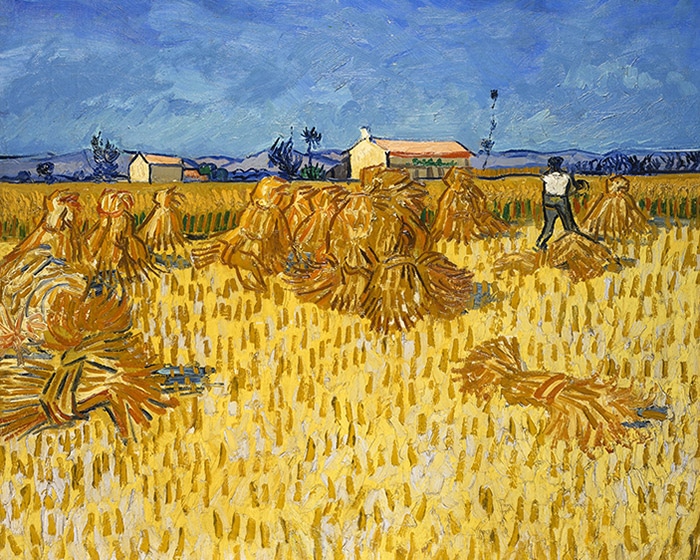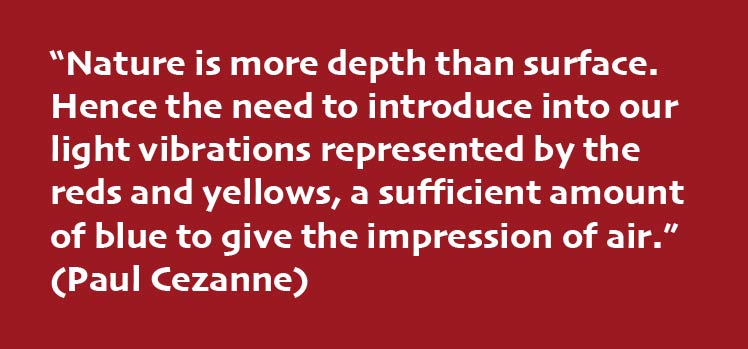At the heart of every brushstroke, every piece of cloth, every bit of your brightly coloured car is a pigment. Pigments are the compounds added to substances to give them colour, shaping our perception of the world via art, fashion, computer screens, and so much more. Pigments and dyes are used everywhere, from paints and inks to fabrics, medicine, cosmetics, and even food.
But what are colour pigments, why are the relevant, and where do they come from? Pigments are brightly coloured, insoluble powders, whose colour is the result of the material absorbing light in the visible spectrum. Everyone has a favourite colour. It has shaped our early friendships on the playground, when we found out that another child likes the same colour, and is still relevant for us as adults, when colours become attributes of our identity. We know where colours occur in nature, what they evoke in art and in culture. Nonetheless, we know only little about their origins. Therefore, we want to have a brief look at the history of colour pigments and how they first manifested in our lives.
Short history of colour pigments
The story of colour pigments is one about experimentation, of science, and chance. Even more so, it is a story about providing us with the means with which to express ourselves, bringing forth some of the greatest art movements – from Renaissance, Romanticism, and Realism to Impressionism, CubismSynthetic cubism was the later period of the Cubist art movement generally dated from 1912 – 1919. Artists of Synthetic Cubism moved away from the multi-perspective approach of Analytical Cubism in favour of flattened images that dispensed allusions of the three-dimensional space. Pablo Picasso, Clarinet, Bottle of Bass, Newspaper, Ace of Clubs (2013) The approach of the analytical phase was More, and Abstract ExpressionismThe term Abstract Expressionism is applied to new forms of abstract art developed by American painters such as Mark Rothko, Jackson Pollock, and Willem de Kooning, flourishing between 1943 and the mid-1950s. Since Abstract Expressionism marked the beginning of New York City as the centre of the Western art world, the movement is also known as the New York School. More.

The beginnings
Minerals have been used as colourants since prehistoric times. Early man used paint for aesthetic purposes, e.g., for body colouration and on cave walls. Yellow earth served as ochre tones, often combined with red earth, white chalk, and carbon black collected from the soot of burning animal fats. One of the earliest examples is the art found in the caves of Lascaux in France.

Colour pigments were produced extensively by Egyptians and in China from early on, who cleaned and washed earth colours to increase their purity, centuries before the production of colours became known among the Greeks and Romans. With the rebirth of interest in arts during the Renaissance, the Italians focused on further developing the range of earth colour pigments. They roasted umber colours and burnt sienna colours to achieve different tones and shades of colour.
The world’s most beautiful colours
The opening of trade routes during the 18th century as well as technological and scientific advances allowed for further experimentation, leading to the first chemically synthesised colours. Finally, the finding of new colour pigments in the 19th century, the invention of the metal tube, which made new colours portable in the form of oil paints and watercolors, and the building of railways gave rise to some of the world’s most beautiful paintings of ImpressionismImpressionism was an art movement of the 19th century developed in France, based on the practice of painting spontaneously out-doors (“en plein air”) rather than in the studio. Key impressionist subjects were everyday scenes and landscapes, in which the momentary and transient effects of sunlight should be captured. The artists worked directly in front of their subjects, using rapid brushwork More and Post-Impressionism.

With the development of acrylic compounds in the mid 19th century, pigments could be suspended in acrylic polymer emulsion. It was German chemist Otto Röhm who made the practical potential of the new materials public. In 1915, he secured a German patent for polyacrylic ester as a binder for drying oils in industrial lacquers. While at this time, acrylic resins were primarily intended for industrial use, the art world soon discovered the potential of the new medium, and the first acrylic emulsion artist paints were developed, with modern high-viscosity paints becoming available in the early 1960s. Many well-known artists of the time experimented with the new medium, including Jackson Pollock, Mark Rothko, Barrett Newman, and Roy LichtensteinRoy Lichtenstein (1923-1997) was a prominent American pop artist who transformed the landscape of modern art with his distinctive comic strip-based paintings. Best known for his bold, graphic style and precise compositions, Lichtenstein's work heavily influenced the Pop Art movement, making profound statements on art and culture through parody and popular media. Born in New York City, Lichtenstein developed an More.
A look at the colours respectively
Blue

The name ultramarine blue means ‘beyond the sea’, given for its source of origin, the lapis lazuli, a gemstone exclusively found in a single mountain range in Afghanistan. The precious material was used by painters since the Middle Ages for depicting the Virgin Mary in a bright Prussian blue robe – not so much for its symbolismSymbolism was a late 19th-century art movement of French, Belgian, and Russian origin. Poets and fine artists were seeking to represent absolute truths using metaphorical images in reaction against realism and naturalism. Content of both images and poetry were suggestive contents to express mystical ideas, emotions, and states of mind. Paul Gauguin, Nave Nave Mahana (1869) The term was coined More but rather for its high value. The colour achieved global popularity, garnishing Iranian Qur’ans and Egyptian funeral portraits, and for many centuries rivalling the price of gold. In the 1950s, a synthetic, more accessible version of blue was invented by a French paint supplier, which painter Yves Klein used as his signature colour. This synthetic version became known as French ultramarine colour.

Yellow

The yellow ochre colour was widely available as early as in prehistoric art. For instance, it was found in Egyptian tombs and in the cave art of Lascaux. However, the colour was avoided by many artists due to its extreme vibrance, until the avant-garde movements in Europe in the 19th and 20th centuries. Best known for the usage of yellow ochre are Joseph Mallord William Turner and Vincent van GoghVincent van Gogh (1853 – 1890) is one of the renowned Post-Impressionist artists, best known for his striking use of colour, emphatic brushwork, and contoured forms. As a son of a pastor, the Dutch artist war brought up in a religious and cultured atmosphere. After working unsuccessfully as a clerk at a bookstore, as a salesman, and as a preacher More. Turner loved the Indian Yellow and the synthetic Chrome Yellow so much that he was ridiculed by contemporaries, who assumed he must have had a vision disorder. Van Gogh is well known for his use of vibrant yellows in paintings such as his sunflowers and starry nights.

Green

Although green is widely associated with nature, its pigments have proven to be some of the most poisonous in history. Green colour pigments were used as early as in Ancient Greece and Rome, mainly in the form of malachite. Greeks came up with the invention of Verdigris, one of the earliest artificial colour pigments in history. Towards the end of the 18th century, the Swedish chemist Carl Wilhelm Scheele created a bright green colour pigment later called Scheele’s green, which was a coppery powder laced with chemical arsenic. Impressionists and Post-Impressionists widely used green in their landscape paintings. Especially famous for the use of intense green shades is Henri Rousseau, who applied the colour in his enormous jungle scenes. Vasari, a leading manufacturer of artists’ oil paints, created a colour known as Rousseau green.

Purple

The colour purple is said to have first appeared in art during the Neolithic era dating back to between 16,000 and 25,000 BC. The prehistoric artists in France applied sticks of manganese powder to paint outlines on the walls of their caves. Purple hues were further popular with the pre-Raphaelite painters in Britain, who mixed cobalt blue with madder to enhance their romantic scenes. Among the avant-garde painters, Claude Monet and Gustav Klimt were best known for their usage of purple, flooding their pictures with sensual purples and bright violets. Manet used Manganese Violet so much that critics accused the painter to have “violettomania”.

Black

Apart from red and yellow ochre, black was one of the first colours used in art, since it could be easily created by burning wood or bone, producing charcoal. In prehistoric eras, artists used minerals to create a black colour pigment for cave paintings, for example for the caves of Lascaux. Over 2,000 paleolithic drawings were found in the caves representing abstract symbols, humans, and animals. The first known black inks were created by the Chinese using ground graphite. The Ancient Greeks later developed a sophisticated technique for painting black silhouettes on clay pottery. In the Roman world, black was associated with cruelty and the bad, leading to paintings in which the evil was painted in black. Likewise, in paintings of the Christian culture of the Middle Ages, the devil and demons would often be displayed in black colour, as opposed to the red that developed in popular culture later.

Red

Red colour pigment found in iron-rich soil and made from ochre was first used in prehistoric cave art. Ancient Egyptians coloured their faces red in ceremonies, while Roman generals would colour their bodies red when celebrating victories. In China, red oxide colour was used to decorate early pottery, and later the gates and walls of the emperor’s palace. During the Renaissance, the nobility had their dresses and costumes dyed with kermes. Centuries later, in the 16th century, the most popular red colour pigment was retrieved from cochineal insects exclusively found on prickly-pear cacti in Mexico. Finally, in the 19th century, the first synthetic red dyes were introduced, replacing the traditional dyes.

White

In prehistoric times, our ancestors used white chalk to create their cave paintings. Readily available, chalk is a kind of limestone made from the mineral calcite, which can be crushed easily. In written records, the earliest mention of a white colour pigment is from the Italian artist Cennino Cennini in the 13th century, using the term “Bianc di San Giovanni” to name a white lime colour pigment. Artists would dry out lime, then reduced it to a white powder immersed in water. Another way of producing white was by using lead, vinegar, and cow dung. Scientists in the 19th century identified lead as poisonous, but it was not until 1978 that the United States banned the production of white lead paint. Avant-garde artists of that time, such as Robert Ryman, Agnes Martin, and Robert Rauschenberg, turned to zinc whites and titanium to create monochromatic white paintings.
You might also be interested in reading the following posts by Pigment Pool:
10 World Famous Paintings of the Modern Period that changed the Artworld forever
Exhibitions to See in Australia in the second half of 2021
The Best Acrylic Paint Set for Artists and Hobbyists In 2021
The Best Watercolor Paint Set for Artists and Hobbyists In 2021
